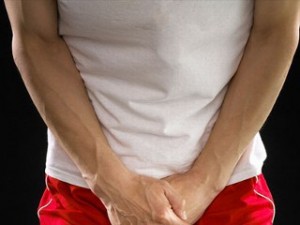Jock itch or Tinea Cruris refers to the inflammation of the skin of the groin due to fungal infection. Jock itch is the most common fungal infection in males. The symptoms of jock itch usually resolve within 2 weeks of treatment.
A person with tinea cruris may experience an itchy and red rash in the groin. Additional symptoms of jock itch include blisters and peeling skin.
Initial treatment of jock itch includes the usage of anti-fungal ointments. For severe infections, treatment requires oral anti-fungal medication prescribed by your health care provider.
Risk factors
Risk factors associated with tinea cruris include:
- Male gender
- Not washing clothes regularly
- Obesity
- Sweating
- Poor personal hygiene
- Sharing towels or personal belongings with people who have fungal infections
- Wearing damp clothing
- Warm humid climate
- Wearing tight clothing
- Conditions that may weaken the immune system such as HIV/AIDS, cancer treatment, diabetes and organ transplant
Causes
Fungi that cause tinea cruris include:
- Epidermophyton floccosum
- Trichophyton mentagrophytes
- Trichophyton rubrum
- Trichophyton verrucosum
Signs and symptoms
Signs and symptoms of jock itch include:
- Localized groin rash
- Skin redness
- Skin swelling
- Blisters
- Skin flaking or cracking
- Burning sensation on the affected regions of the skin
- Penile itching
- Genital itching
- Labial itching
- Painful intercourse
- Genial sores
Complications
Complications associated with jock itch include:
- Cellulitis
- Impetigo
- Loss of skin color
- Scarring
Treatment
Treatment for jock itch includes:
- Avoid scratching the affected regions of the skin and rash – this may exacerbate the condition and lead to spread of infection
- Keep the skin clean and dry and avoid activities that may stimulate sweating
- Bath once a day and dry the skin properly
- Wash clothes properly with soap and hot water
- Use topical antifungal creams
- Take oral antihistamines to control itching
- Take medication as directed by your health care provider and avoid skipping doses
When to seek medical attention
See your doctor if any of the following problems occur along with jock itch:
- Worsening rash
- Worsening skin redness
- Worsening skin tenderness
- Worsening pain
- Symptoms do not resolve with 2 weeks of treatment
- Drainage of pus form the skin
- Fever of 101 degrees F or above
- Brown or yellow scabs on the skin over the rash
Prevention
Follow these prevention steps to reduce risk of jock itch:
- Avoid having close contact with people who have jock itch
- Keep your skin clean and dry as much as possible
- Bathe after physical activity or work that may cause sweating
- Change clothes and underwear regularly and ash them in hot water
- Change clothes and under more often in hot weathers
- Wear loose fitting, cotton clothes and underwear
- Follow a good personal hygiene
- Wash personal belongings such as clothes, underwear, linens and beddings regularly
- Avoid sharing personal belongings such as towels and razors with others
- Wash your hands regularly
- Clean shower areas and bathrooms with disinfectant detergents
Related Articles You May Also Like
Related Video
http://www.youtube.com/watch?v=MSuslxqCbqg

